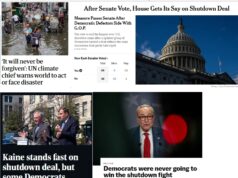by Ivy Main; cross posted from Power for the People VA
In mid-March, the Virginia General Assembly passed legislation to transition our economy from fossil fuels to clean energy over the coming years. Two weeks later, Virginia shut down in response to the COVID-19 pandemic. Among the businesses whose very existence is now in peril are the energy efficiency companies and solar installers we will be counting on to get us off fossil fuels.
Home weatherization and energy efficiency programs have come to an almost complete halt in Virginia, including programs run by Dominion Energy Virginia. Nationwide, the energy efficiency sector has lost almost 70,000 jobs. Meanwhile, companies that install solar, especially rooftop systems, report plummeting sales. The Solar Energy Industries Association reports that nationally, 55 percent of solar workers are already laid off or suffering cutbacks.
The timing seems terrible — although to be fair, there’s no good time for an economy-crushing, worldwide pandemic. Eventually, however, the virus will run its course or be defeated through vaccine or cure. At that point, we will face a choice: we can stagger blinking out into the sunlight aimlessly wondering now what?, or we can execute the well-developed plan we have spent these weeks and months formulating.
Let’s go with the second option.
First, it’s worth remembering that nothing happening now will change the trajectory of clean energy. Solar and wind had banner years in 2019, continuing their steady march to dominance. Wind has become the largest single source of electricity in two states, Iowa and Kansas. The island of Kauai in Hawaii is now 56 percent powered by renewable energy, mostly solar. Across the U.S. wind, solar and hydro produce more electricity than coal. Wind is the cheapest form of new electric generation nationally; solar takes pride of place in Virginia.
Meanwhile, fossil fuel is even more firmly on its way out. Six of the top seven U.S. coal companies have gone into bankruptcy since 2015. That was before the lockdown sent energy demand down, further hurting high-priced coal.
Fracked gas helped kill coal but is itself vulnerable to price competition from renewables. Odd as it sounds, the collapse in oil prices will make natural gas more expensive. That’s because oil producers in Texas and North Dakota are closing wells that produced natural gas along with oil. The tightening supply of gas may finally make fracking companies in Appalachia profitable, but it means higher prices for utilities. Wind and solar will just keep looking better.
The Trump administration is still trying futilely to hold back the tide, but the U.S. will get a lot farther riding the wave than struggling against it. Congressional leaders should declare the country “all in” on clean energy. Instead of bailing out the highly polluting fossil fuel industries, they should put that money to work creating more jobs and economic development — and actually doing something about climate change — with energy efficiency and renewables.
Congress should return the Investment Tax Credit for solar (and offshore wind) to the 30 percent level in effect last year and keep it there, instead of continuing the phase-out now in effect. Congress should also give solar owners the option of taking the credit as a cash grant, as it did during the last recession, and for the same reason: tax-based incentives are less useful in a recession, when companies can’t use the credits.
Virginia’s Sens. Tim Kaine and Mark Warner have a critical role to play in convincing their colleagues to support solar. So far neither is rising to the task.
On the state level, Northam did the right thing in signing this year’s energy legislation, allowing utilities and industry members to start planning for the future. But the Clean Economy Act gets wind and solar off to a very slow start; Dominion doesn’t have to build Virginia solar for five years yet. And though the new laws remove many policy constraints on customer-sited solar, they offer next to nothing in the way of financial incentives.
Governor Northam should make it clear he intends to make rooftop solar a priority for next year, along with projects on closed landfills, former coal mine areas, and other brownfields, with a special focus on areas hardest-hit economically. He can also encourage corporations that do business in Virginia to meet their sustainability goals with Virginia wind and solar, starting right now.
The governor should also prioritize building efficiency. Virginia will be adopting a new residential building code this year, and if past years are any indication, its energy efficiency provisions will fall short of the most recent model code standard. It’s up to the governor to make sure Virginia adopts the full code.
Local governments are already taking advantage of suddenly-empty buildings to accelerate maintenance and repairs. But it’s a good time to think bigger, with new financing tools available that make energy efficiency retrofits and solar facilities cash-positive right from the start.
Energy performance contracting allows the energy savings to pay for retrofits. The Department of Mines, Minerals and Energy keeps a list of pre-qualified energy service companies and offers expertise to help local government employees navigate the process.
This year’s legislation also greatly expanded local governments’ ability to finance on-site solar through third-party power purchase agreements, effective July 1. The PPAs are structured so that a school district, municipality or any commercial or non-profit customer can have a solar array installed at no cost, paying just for the energy produced.
In December, Fairfax County awarded contracts for PPAs to install solar on more than a hundred sites, including schools and other government buildings. The county’s contract is “rideable,” which allows other counties and cities to piggyback, getting the same terms without the need for new contract negotiations.
Unfortunately, local governments in southwest Virginia are prevented from pursuing PPAs — not by state legislation, which allows it starting July 1, but by a contract with Appalachian Power that governs their electricity purchases from the utility. The contract is up for renewal this year; disgracefully, APCo is refusing to agree to new terms allowing the localities to use solar PPAs. APCo should back off, and let local governments in economically depressed southwest Virginia start saving money and supporting solar jobs this year.
Arlington County has gone beyond on-site solar, contracting for a share of a large solar farm in southern Virginia that will provide more than 80 percent of the electricity for county government operations. It’s a model any locality can adopt.
Virginia residents and businesses also have good reasons to focus on clean energy. The enforced down-time many people are experiencing means more time to research options, and companies are motivated to offer low prices on energy efficiency upgrades and rooftop solar.
The federal government offers more generous tax credits this year than next. Credits for residential energy efficiency equipment and a deduction for energy efficient commercial buildings expire at the end of this year.
The investment tax credit for solar (as well as for geothermal heat pumps, fuel cells and small wind turbines) stands at 26% for projects placed in operation this year, but it will drop to 22% in 2021. It falls to 10% for commercial customers and disappears altogether for residential customers in 2022. If Congress acts to raise the credit to 30%, buyers will get an even bigger boost. If it doesn’t, there will be a rush this year to get projects done by the end of the year, so customers should secure their place in line now.
Virginia nonprofits have helped hundreds of residents and businesses save money on solar and EV chargers through bulk purchasing programs. Virginia Solar United Neighbors just announced a series of virtual information sessions to promote the Arlington Solar EV Co-op. And LEAP, which closed operations temporarily due to the virus, reports it has restarted two programs, Solarize NOVA and Solarize Piedmont.
In an ideal world, the U.S. would already be well along in executing a comprehensive plan for a clean energy transition, one that includes job retraining for workers, and that resists counterproductive efforts to save the fossil fuel industry. But we can do the next best thing, and use the tools of government, the market and consumer choice to speed us in the right direction.
COVID-19 has handed all of us a big, fat lemon. Let’s make some lemonade.
A version of this article appeared originally in the Virginia Mercury on April 30, 2020.













